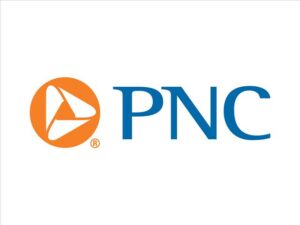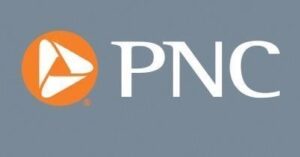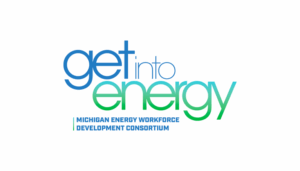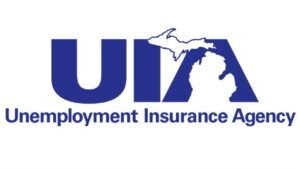 Underlying Demand Was Solid
Underlying Demand Was Solid
- Real GDP fell slightly in the first quarter, the first contraction in the economy in three years.
- Demand remained solid; the economy shrank because of a huge surge in imports ahead of tariffs.
- Inflation picked up in the first quarter.
- PNC’s forecast is for weaker growth in 2025 due to tariffs, but not a recession. But recession risks are much higher now than they were at the beginning of year.
- PNC expects the FOMC to cut the federal funds rate by a cumulative 100 bps in the second half of 2025.
Real GDP contracted 0.3% at an annualized pace in the first quarter of 2025, according to the advance estimate from the Bureau of Economic Analysis. This was the first contraction in real GDP since the first quarter of 2022.
The contraction came entirely from imports as the US trade deficit surged as firms rushed to get ahead of tariffs; higher imports are a drag on GDP. Imports increased 41% at an annualized rate in the first quarter, with exports up 2%. The larger trade deficit subtracted a whopping 4.8 percentage points from annualized GDP growth in the first quarter.
Accompanying this much larger trade deficit was a huge increase in inventories as firms stocked up ahead of tariffs. Inventories added 2.2 percentage points to growth in the first quarter. Final sales of domestic product-GDP minus the changes in inventories, which measures net demand for U.S.-produced goods and services-fell an 2.5% annualized in the first quarter.
But while the headline number was soft, distorted by trade and inventories, demand in the U.S. economy was solid in the first quarter. Real (inflation-adjusted) consumer spending rose a solid 1.8%, adding 1.2 percentage points to annualized growth. Auto sales fell as consumers bought in the fourth quarter ahead of tariffs, but there were solid increases in consumer spending on non-durable goods (meant to last fewer than three years) and services. Business fixed investment rose almost 10% annualized, adding 1.3 percentage points to growth. Most of this was equipment investment, up more than 22%, again as businesses tried to get ahead of tariffs. Residential investment, tied to the housing market, was slightly positive for growth in the quarter, while government spending was a small drag.
Inflation accelerated in the first quarter. The PCE consumption expenditures price index rose 3.6% at an annualized rate, the fastest inflation since the first quarter of 2023. The core PCE price index, excluding volatile food and energy prices, rose 3.5% annualized, the largest increase since the first quarter of 2024. Both of these are well above the Federal Reserve’s 2% objective.
The headline decline in first quarter advance GDP report was distorted by a huge increase in the trade deficit as imports surged ahead of tariffs. It’s not that consumers and businesses weren’t buying. Final sales to domestic purchasers-a measure of demand from U.S. consumers, firms, and government-rose a solid 2.3% in the first quarter as much of the surge in imports was purchased. Underlying demand in the U.S. economy was still good in the first quarter. The fundamentals were generally solid, supported by the decent labor market. According to the indicators that the National Bureau of Economic Research uses to determine if the U.S. economy is in recession-things like employment, consumer spending, personal income, and industrial production-the U.S. economy was not close to recession in the first quarter.
But consumer and business sentiment have fallen rapidly since President Trump’s announcement of big increases in tariffs, and inflation is set to pick up even further as tariff hikes work their way into prices. GDP growth will be below 1% in 2025, much softer than it was in 2024 (2.5% on Q4-to-Q4 basis). And the unemployment rate will move up to around 5% over the next year.
Recession risks are much higher than they were at the beginning of the year as tariffs will be a significant drag. The probability of a U.S. recession over the next year is about 40%, up from around 15% in early 2025. A downturn is not inevitable, particularly if the Trump administration steps back from tariff hikes. But the uncertainty surrounding the tariffs is itself a drag on the economy; with the extent of tariffs uncertain, consumers are reluctant to make big purchases and businesses can’t make decisions about investment, weighing on growth. The higher the tariffs are, the longer they remain in place, and the greater the uncertainty surrounding them, the greater the probability of recession.
The Federal Reserve has a difficult task ahead of it. The central bank has a dual mandate of maximum employment and stable prices, which it has defined as PCE inflation of 2%. Those goals may quickly come into conflict. Inflation picked up the first quarter, moving further above 2%, and will be even higher in the near term as tariffs lead to prices hikes. But weaker growth from tariffs will contribute to a softening labor market. The Fed may face the choice of cutting rates to support the labor market, which could contribute to higher inflation, or not cutting rates to choke off inflation, leading to higher unemployment. President Trump is ramping up the pressure on Federal Reserve Chair Powell to cut the fed funds rate, the Fed’s key policy interest rate. PNC’s forecast is for fed funds rate cuts of 25 basis points at each of the four Federal Open Market Committee meetings in the second half of this year; that would take the rate to a range of 3.25% to 3.50% by the end of 2025.
PNC Bank, National Association, is a member of The PNC Financial Services Group, Inc. (NYSE: PNC). PNC is one of the largest diversified financial services institutions in the United States, organized around its customers and communities for strong relationships and local delivery of retail and business banking including a full range of lending products; specialized services for corporations and government entities, including corporate banking, real estate finance and asset-based lending; wealth management and asset management.










